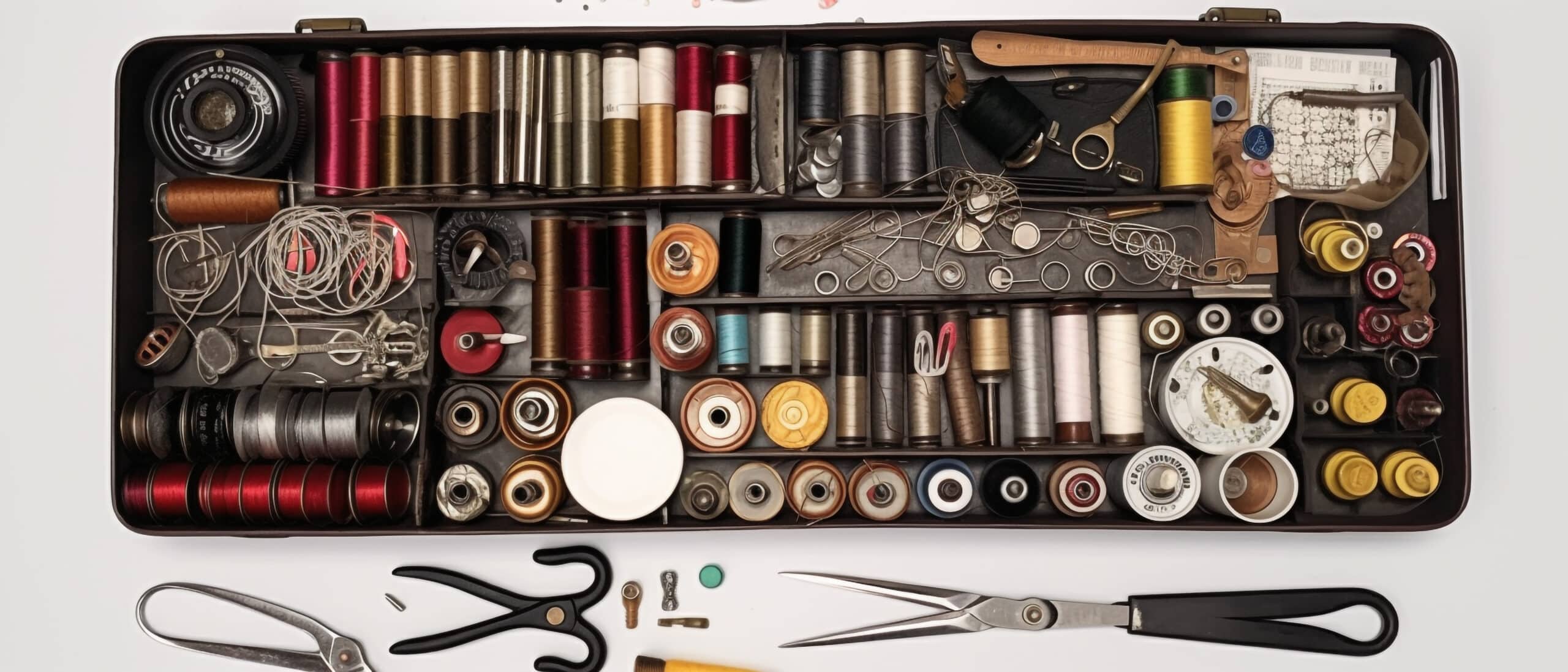What’s the Best Method to Organize a Tackle Box?
Key Takeaways
- Organizing a tackle box by type of fishing lure is crucial for maximizing efficiency and saving time on the water.
- Labeling compartments and regularly cleaning out old or damaged gear helps anglers easily access their tackle and quickly re-rig their lines.
- Using adjustable dividers, separating soft plastic baits, utilizing small trays for hooks and small tackle, and storing tools and extra line in designated pockets are additional tips for maximizing tackle box organization.
Organizing a tackle box is crucial for anglers to maximize efficiency and ensure easy access to their fishing gear. A well-organized tackle box saves time on the water, helps anglers quickly find the right lures, and allows for a strategic approach based on the type of lures available. In this article, we will explore the best method to organize a tackle box based on expert recommendations and insights.
Organize by Type of Fishing Lure
One of the most commonly recommended methods for organizing a tackle box is to categorize the fishing lures by type. This allows anglers to easily locate specific lures when needed and prevents wasting time searching through a jumbled mess of gear.
By organizing lures by type, anglers can quickly identify the right bait for the current fishing conditions. For example, if they are targeting bass, they can easily locate their collection of crankbaits or soft plastics designed for bass fishing. This not only saves time but also helps in strategizing the approach based on the type of lures available.
According to expert recommendations, anglers should label each tray or compartment in their tackle box to quickly locate specific lures. This labeling system enables easy identification of the desired lure without the need to sort through the entire box. It’s essential to keep the compartments clean and remove any damaged or unused lures regularly.
While the text from the provided sources does not mention any specific cons of organizing a tackle box by type of fishing lure, it’s important to note that this method may require additional storage space, such as plastic tubs or boxes, to separate and organize different types of lures. Additionally, it may require some initial time and effort to sort and label the lures properly. However, the benefits of easy access and efficient organization outweigh these potential drawbacks.
Additional Tips for Tackle Box Organization
Aside from organizing lures by type, there are several other expert recommendations for maximizing tackle box efficiency. Let’s explore these tips:
Use Adjustable Dividers
Matching lure sizes with adjustable dividers helps maximize the storage space in the tackle box. This allows anglers to customize the compartments according to their specific needs and ensures that the lures fit snugly without tangling or getting damaged.
Separate Soft Plastic Baits
Keeping soft plastic baits separated and in their original packaging helps preserve their quality. It prevents them from melting or bleeding together, ensuring they remain usable for longer periods.
Utilize Small Trays for Hooks and Small Tackle
Using small trays or compartments for hooks, weights, floats, and other small terminal tackle helps keep them organized and easily accessible. It prevents them from getting mixed up with larger lures and saves time when rigging lines.
Store Tools in Front Pockets
Storing tools such as pliers, line cutters, and de-hookers in front pockets or large compartments ensures they are readily available when needed. This eliminates the need to search for them amidst the lures and allows for quick and easy access.
Keep Line in Side Pockets
Storing spools of leader material or extra fishing line in side pockets or a separate bag prevents tangling and keeps them organized. This ensures that anglers have readily available line options for re-rigging or replacing damaged line.
Choosing the Right Tackle Box
It’s important to select the right tackle box based on the type of fishing and gear. A sturdy, waterproof, and compartmentalized tackle box with adjustable dividers is highly recommended. A transparent lid allows for quick visual access to the lures without opening the box, saving time and effort.
Customization based on individual preferences and fishing style is encouraged. Anglers should consider factors such as portability, size, and the number of compartments required to accommodate their specific gear.
Conclusion
Organizing a tackle box by type of fishing lure is widely regarded as the best method for maximizing efficiency and saving time on the water. By categorizing lures, labeling compartments, and regularly cleaning out old or damaged gear, anglers can easily access their tackle and quickly re-rig their lines when needed.
Remember, a well-organized tackle box not only saves time but also enhances the overall fishing experience. So, take the time to sort and arrange your gear, and enjoy a more efficient and enjoyable fishing trip.
Related Websites:
- Tackle Box Organizer Guide: Tips for Tackling Your Tackle Storage – Richmond Fishing Supply
- Organizing a Tackle Box – Sail Magazine
- Tackle Box Organization – Karl’s Bait & Tackle
- How to Organize a Tackle Box – Take Me Fishing
FAQs:
Q: Why is it essential to organize a tackle box effectively?
Organizing a tackle box effectively allows fishing enthusiasts to easily access and identify specific items, saving time and improving their fishing experience. It also helps prevent damage to hooks and lures and ensures they are always ready for use.
Q: What are the benefits of sorting tackle box items by category?
Sorting tackle box items by category provides easy access to specific items and quick identification. It helps maintain order and saves time searching for items. Common categories include hooks, sinkers, lures, and lines.
Q: How can dividers and trays help with organizing a tackle box?
Dividers can separate different categories or sizes of items within a tackle box, minimizing tangling and improving organization. Trays are useful for keeping smaller items organized and preventing them from getting mixed up.
Q: What are some tips for organizing hooks and lures within a tackle box?
You can use foam inserts, specialized hook holders, or magnetic strips to keep hooks and lures organized. This helps avoid damage and tangling, making them easily accessible when needed.
Q: Why is arranging tackle box items based on frequency of use beneficial?
Arranging tackle box items based on frequency of use ensures easy access to frequently needed items, saving time and improving efficiency. Items that are needed more often should be placed in easily accessible compartments.






